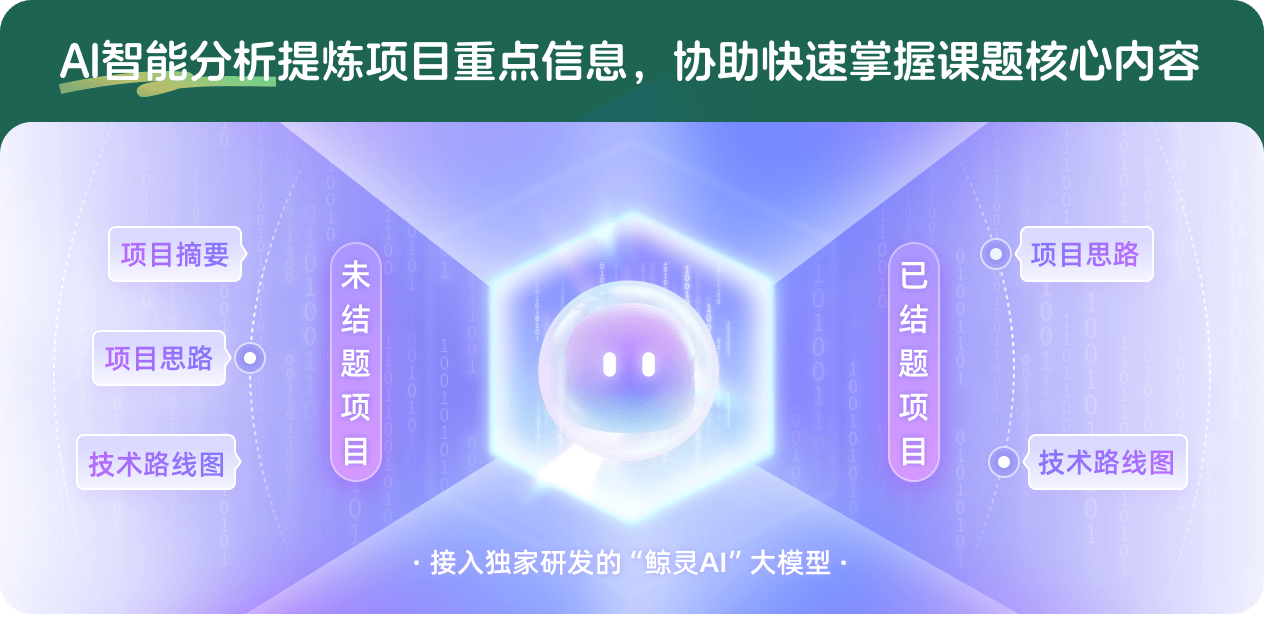基于免疫激活与光热双功能的四氧化三铁纳米粒用于肿瘤治疗及其作用机制研究
项目介绍
AI项目解读
基本信息
- 批准号:81803095
- 项目类别:青年科学基金项目
- 资助金额:21.0万
- 负责人:
- 依托单位:
- 学科分类:H1818.肿瘤免疫治疗
- 结题年份:2021
- 批准年份:2018
- 项目状态:已结题
- 起止时间:2019-01-01 至2021-12-31
- 项目参与者:原婉琼; 张元元; 谈志远; 马静; 孙素会;
- 关键词:
项目摘要
Photothermal therapy (PTT) in cancer treatment has instant antitumor effect but might result in tumor residue leading to tumor recurrence, while macrophage-based antitumor immunotherapy has extensive systemic effect but with slow onset and limited therapeutic effect on solid tumors. We proposed a new antitumor strategy combining PTT with activation of macrophage-based immunotherapy. Iron oxide (Fe3O4) nanoparticles have good photothermal conversion properties. In pilot experiments, we found that after incubated with photothermal Fe3O4 nanoparticles prepared by our research group, the expression of the marker protein of M2 phenotype could be down regulated in macrophages cells, indicating that this nanomaterial has the potential to modulate macrophage phenotype transformation leading to immune activation and antitumor effect. However, the specific functions of Fe3O4 nanoparticles in the macrophage transformation process remain to be studied, and the mechanisms of this effect remain to be clarified. Thus, this project plans to construct novel Fe3O4 nanoparticles with dual functionalities of immune activation and photothermal effect. And its biological effects in macrophage transformation process will be studied in detail and its molecular mechanisms will be discussed. Clinically relevant breast cancer is chosen as tumor models to evaluate the combined antitumor activities and the anti-recurrence effect of the dual functional Fe3O4 nanoparticles in vivo and to study the mechanisms of this combined antitumor therapy.
针对肿瘤光热治疗起效快但易出现肿瘤残留及复发的局限性,以及基于巨噬细胞的肿瘤免疫治疗作用广泛但起效较慢且对实体瘤治疗作用有限的特点,提出光热联合激活巨噬细胞免疫的新型肿瘤治疗策略。四氧化三铁纳米粒具有良好的光热转化性能,在前期实验中本课题组发现所制备的光热四氧化三铁纳米粒与巨噬细胞共孵育后,可诱导其M2表型特征蛋白表达下调,预示该材料具备调节巨噬细胞转型从而激活免疫发挥抗肿瘤作用的潜力,然而其具体作用机制尚亟待阐明。本项目拟构建新型“免疫激活”“光热”双功能四氧化三铁纳米粒,在细胞水平对其调节巨噬细胞转型的生物效应进行系统评价,在分子水平对其作用机制进行阐释。选择热疗临床相关度较高且易耐药的乳腺癌作为肿瘤研究模型,在动物水平评价该新型双功能材料联合治疗肿瘤及抑制肿瘤复发转移的效果,并对其联合抗肿瘤机理进行深入探讨。
结项摘要
针对肿瘤光热治疗起效快但易出现肿瘤残留及复发的局限性,以及基于巨噬细胞的肿瘤免疫治疗作用广泛但起效较慢且对实体瘤治疗作用有限的特点,提出光热联合激活巨噬细胞免疫的新型肿瘤治疗策略。本项目构建新型 “免疫激活” “光热”双功能的四氧化三铁纳米粒,对其光热效应及对巨噬细胞转型的调控性能进行了系统研究,对其“免疫激活”“光热”双功能抗肿瘤疗效进行了评价,并对该双功能材料抗肿瘤机制及免疫调节过程中T细胞的作用进行了探索。.实验结果显示构建的四氧化三铁纳米簇(MNC)能有效诱导肿瘤微环境中普遍存在的肿瘤相关巨噬细胞亚型转换,从而降低肿瘤相关巨噬细胞的免疫抑制、增强巨噬细胞对肿瘤的杀伤作用。同时该材料具备光热转化能力,在激光激发下能够发挥光热效应进一步促进其免疫调节作用效果,上调肿瘤相关巨噬细胞的内吞、释放抗肿瘤细胞因子,募集T细胞进入肿瘤组织,增加肿瘤部位及血液中的T细胞分布,从而发挥抗肿瘤疗效并抑制肿瘤转移。.本研究结果揭示了光热效应对癌症治疗中免疫调节的积极影响,并提示了诸如四氧化三铁纳米粒的无机纳米光热转化材料,很可能具备光热促进的免疫调节效应,在肿瘤联合治疗等方向有着巨大潜力和应用前景。
项目成果
期刊论文数量(1)
专著数量(0)
科研奖励数量(0)
会议论文数量(0)
专利数量(0)
CMTM3 suppresses chordoma progress through EGFR/STAT3 regulated EMT and TP53 signaling pathway.
CMTM3 通过 EGFR/STAT3 调节 EMT 和 TP53 信号通路抑制脊索瘤进展
- DOI:10.1186/s12935-021-02159-5
- 发表时间:2021-09-24
- 期刊:Cancer cell international
- 影响因子:5.8
- 作者:Yuan W;Wei F;Ouyang H;Ren X;Hang J;Mo X;Liu Z
- 通讯作者:Liu Z
数据更新时间:{{ journalArticles.updateTime }}
{{
item.title }}
{{ item.translation_title }}
- DOI:{{ item.doi || "--"}}
- 发表时间:{{ item.publish_year || "--" }}
- 期刊:{{ item.journal_name }}
- 影响因子:{{ item.factor || "--"}}
- 作者:{{ item.authors }}
- 通讯作者:{{ item.author }}
数据更新时间:{{ journalArticles.updateTime }}
{{ item.title }}
- 作者:{{ item.authors }}
数据更新时间:{{ monograph.updateTime }}
{{ item.title }}
- 作者:{{ item.authors }}
数据更新时间:{{ sciAawards.updateTime }}
{{ item.title }}
- 作者:{{ item.authors }}
数据更新时间:{{ conferencePapers.updateTime }}
{{ item.title }}
- 作者:{{ item.authors }}
数据更新时间:{{ patent.updateTime }}
其他文献
Matrix metalloproteinases sensitive peptide conjugated polymer micelles for site-specific release of drug and enhancing tumor accumulation: preparation, in vitro and in vivo evaluation
用于药物位点特异性释放和增强肿瘤积累的基质金属蛋白酶敏感肽缀合聚合物胶束:制备、体外和体内评估
- DOI:--
- 发表时间:2016
- 期刊:International Journal of Nanomedicine
- 影响因子:8
- 作者:张小艳;王晓飞;钟伟童;任筱青;沙先谊;方晓玲
- 通讯作者:方晓玲
其他文献
{{
item.title }}
{{ item.translation_title }}
- DOI:{{ item.doi || "--" }}
- 发表时间:{{ item.publish_year || "--"}}
- 期刊:{{ item.journal_name }}
- 影响因子:{{ item.factor || "--" }}
- 作者:{{ item.authors }}
- 通讯作者:{{ item.author }}

内容获取失败,请点击重试

查看分析示例
此项目为已结题,我已根据课题信息分析并撰写以下内容,帮您拓宽课题思路:
AI项目摘要
AI项目思路
AI技术路线图

请为本次AI项目解读的内容对您的实用性打分
非常不实用
非常实用
1
2
3
4
5
6
7
8
9
10
您认为此功能如何分析更能满足您的需求,请填写您的反馈:
相似国自然基金
{{ item.name }}
- 批准号:{{ item.ratify_no }}
- 批准年份:{{ item.approval_year }}
- 资助金额:{{ item.support_num }}
- 项目类别:{{ item.project_type }}
相似海外基金
{{
item.name }}
{{ item.translate_name }}
- 批准号:{{ item.ratify_no }}
- 财政年份:{{ item.approval_year }}
- 资助金额:{{ item.support_num }}
- 项目类别:{{ item.project_type }}




















